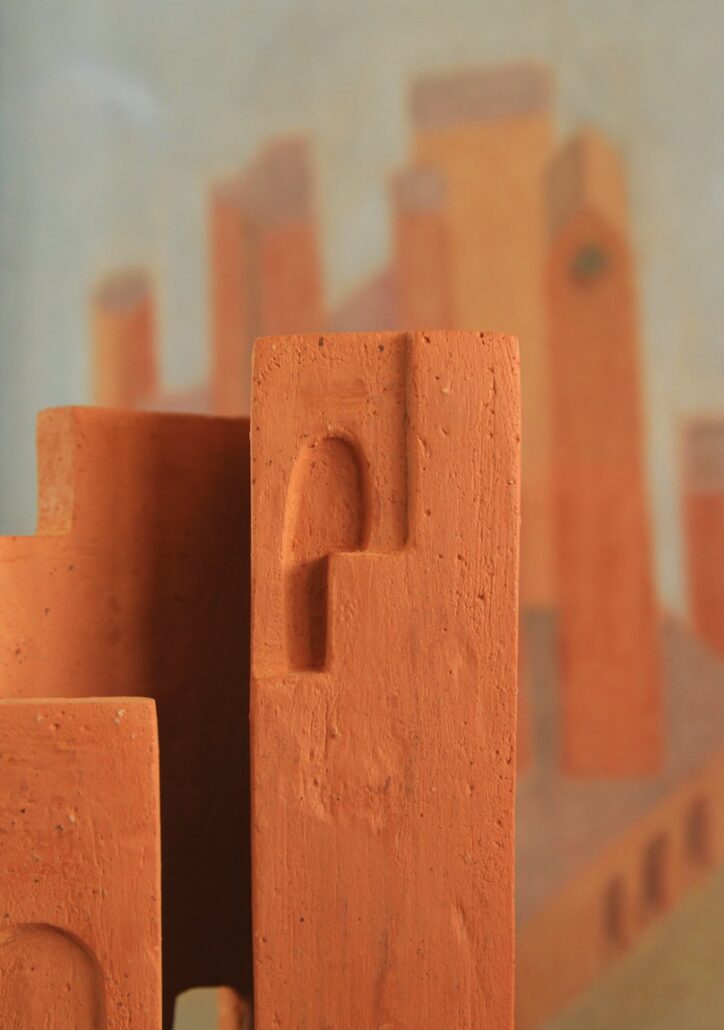The dwellings and cityscapes produced by Melbourne-based Italian artist Giordano Biondi envision imaginary, idealised constructions that produce a complex narrative upon prolonged inspection. “I tend to produce understated work,” says the artist. “I’d love to give something that could potentially take years to speak all it has to speak.” Biondi has recently turned to clay to expand his practice, whittling away at single blocks of clay until they reveal the architectural forms he imagines might be hidden inside. “I started making objects with clay during the first lockdown in Melbourne last year,” he says. “It was an opportunity to develop sculptural versions of ideas that were previously expressed as drawings.” Each work possesses an almost Escher-like quality, with winding staircases that lead the eye around arches, columns and doorways. The three-dimensional nature of these mysterious objects allow for multiple and changing perspectives. This, combined with differences in lighting and position, grants an almost unlimited number of possibilities for interpretation.
Currently represented by West End Art Space in Melbourne, Biondi is continuing to expand this series, drawing from a range of architectural styles and periods to create works that exist out of time. These pieces are monuments to imagination, turning recognisable elements into contemplative structures that evoke curiosity and wonder.
Above: Giordano Biondi, Variations on Armida’s Theme. Clay, 14 x 6 x 6cm. Courtesy: the artist and West End Art Space, Melbourne.
Below: Giordano Biondi, Variations on Armida’s Theme. Clay, 14 x 6 x 6cm. Courtesy: the artist and West End Art Space, Melbourne.


